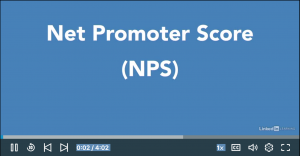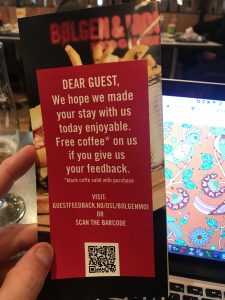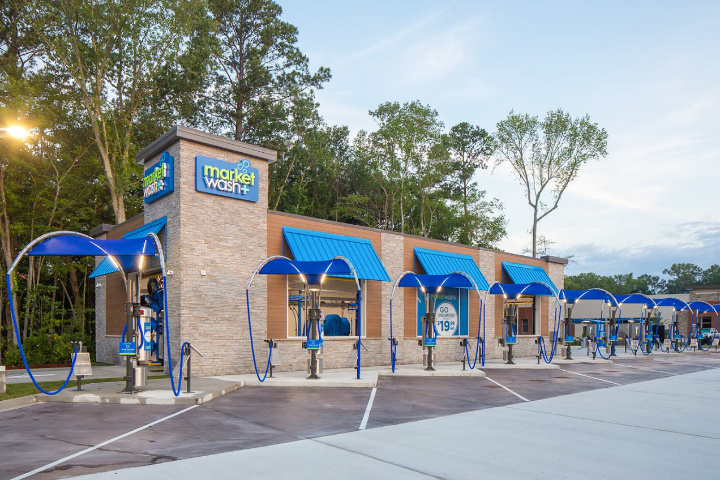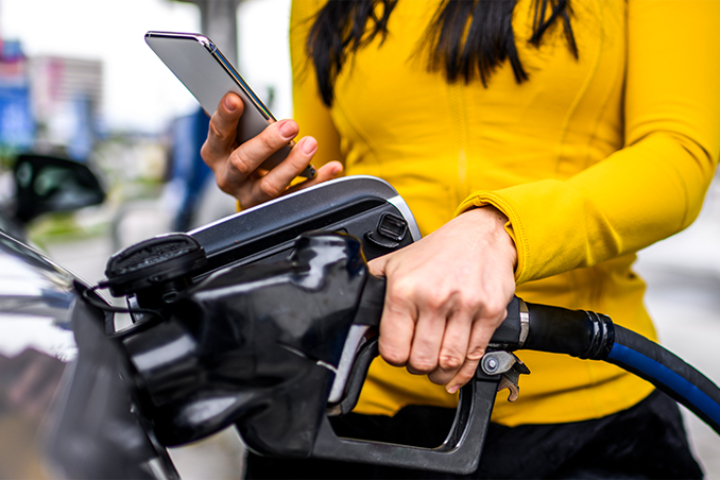From a loyalty marketing perspective, few business tools are as useful as NPS – or Net Promoter Score – described by Harvard Business Review as “the one number you need to grow” – and the industry standard since the model was first published more than two decades ago as a way to measurably link your customer’s loyalty to your future profitability.
The ingenuity of the NPS approach lies in the question it uses which reveals the customer’s true motivation. Whilst the factors that drive our buying behaviour are complex and varied, the “ultimate question” effectively sidesteps irrelevant influences to get to the true heart of the customer’s mindset by cleverly asking customers whether they would actually recommend the brand to a friend. By putting their own reputation on the line, customers commit what Fred Reichheld (the man behind the model) calls “the ultimate act of loyalty“.
An alumnus of Harvard Business School, and a Fellow and Consultant with Bain and Company for over forty-two years, Reichheld’s work has been embraced by leading global brands such as Apple Retail and American Express, so in this article we review both how and why you can implement this simple tool in your business to understand the patterns of behaviour that are driving the profitability and growth potential of your business, starting with a short introduction video from LinkedIn.

Benefits of Net Promoter Score :
Traditional customer research typically consists of lengthy questionnaires which are designed to capture specific insights across multiple issues from customers. But as busy people, we avoid lengthy questionnaires, so one immediate benefit of using NPS is that it asks just one simple question. This ensures higher response rates which are essential to achieve a statistically valid sample of data, while also eliminating the potential for customer frustration. Here is the question that customers are asked:
How likely is it that you would recommend [brand] to a friend or colleague?
Customers choose from 1 to 10 on the scale of their willingness to recommend the brand – 0 to six scores are classified as ‘detractors’, customers scoring seven or eight are ‘passive’ and only those awarding a nine or ten become ‘promoters’. Your overall NPS score as a single number is calculated by subtracting the percentage of detractors from the percentage of promoters.

In addition to a definitive measurement of the satisfaction of your customers, the analysis ensures complete visibility of who your top customers are – the ones you never want to lose and on whom the majority of your loyalty efforts and resources should be focused on retaining.
Promoters are known to be less price sensitive, they churn less and actively recommend your brand, while passive customers are more price sensitive and also more vulnerable to competitors. Clearly, detractors are a significant cause for concern as they can cause considerable brand damage and indicate more fundamental health issues in your business that need attention.
So what constitutes a good NPS score? This varies hugely by industry however as the range ranges from -100 to +100, anything over 0 is considered a good result and anything over 50 is excellent.

Measuring Your NPS
There is no global recommendation on how often you should measure your NPS, so the key is to ensure the sample size is valid while ensuring that frequent customers are not targeted excessively. An airline may report to management on a monthly basis, however customer-centric brands like Apple survey customers ‘every day in every store’ – sending a clear message to customer-facing staff that delighting customers is their top priority in the store’s day-to-day operations.
Reichheld identified three key principles which are essential for any company implementing NPS to ensure the programme’s success, such as how Apple applied the tool systematically in order to “enrich” the lives of their customers.
- Measure feedback consistently – occasional surveys such as point of sale research is simply not effective to identify and understand patterns or trends in customer feedback.
- Close the Loop: Within Apple retail, the store manager calls every detractor (those customers rating 0 to 6) to understand the problem they experienced, apologise, and put measures in place to address their issue.
- Celebrate success. Employees are critical to the success of any retail operation so peer recognition and sharing exceptional results from promoters serve to energise and reward those staff responsible and inspire them to continually deliver at their best. It also helps improve employee loyalty and retain retail staff.
- Share Best Practice: A final recommendation is to invite feedback from store staff through to the company headquarters in a clear, consistent and committed process. Customer-facing staff provide a unique window of feedback directly from customers to central operations, capturing ideas and improvements while ensuring positive team dynamics.
With this comprehensive approach, it’s no surprise that Apple Retail’s NPS has reached a world-leading NPS score of 89, with the retail sector overall lagging behind with an average score of 29.
The impact (or potential impact) of measuring your NPS is compelling, with recent research proving that promoters spend 3.5 times more than detractors – a key audience to impress to guarantee your future profitability. Already more than two-thirds of Fortune 1000 companies are using the metric, so there’s no doubt that digital solutions like our loyalty management platform offer a really simple approach to start by ensuring the survey communication is managed with the appropriate business rules for your stores automatically applied.
We are delighted to see more and more of our customers are implementing the solution, for example in Oslo airport in various restaurants operated by HMSHost, customers are encouraged to scan a barcode on the menu to give feedback. Here is the NPS case study if you’d like more details and if your business has not yet adopted the tool, please do contact us for a demonstration just how easy it is to capture this fantastic feedback in order to drive your future business profitability.

About Us:
Liquid Barcodes is a leading global loyalty and digital marketing technology company specialized for the convenience store and foodservice industries. Our proprietary cloud-based technology platform allow retailers to create and manage their digital marketing campaigns with a proprietary process we call the “customer connection cycle’ to engage, promote and reward customers activities in real-time across digital and media channels.
How we do it:
We have developed the most advanced loyalty and digital marketing technology platform specifically for convenience store and foodservice retailers globally.
Retailers use our self-service dashboard to create and manage loyalty driven marketing campaigns that increase purchases with their existing customers, as well as effectively target and acquire new customers through partners or paid media channels.
One core component of live loyalty is gamification. We have gamified branding, loyalty and promotions. We believe this approach is essential in order to get customers’ attention and ultimately truly engage them with repeatable actions thereby winning their loyalty.
Check out some of our exciting/proven results here:
About Me:
Chief Content Officer, Liquid Barcodes and Independent Loyalty Consultant
With over twenty-five years marketing experience, I specialise in loyalty marketing consulting, managing consumer loyalty propositions, strategy and operations. In addition to working with Liquid Barcodes, my clients have included Telefonica O2, Three Mobile, Electric Ireland, Allied Irish Bank and The Entertainer, as well as Avios – the global points currency for some of the world’s top airlines. I am also a judge for the Loyalty Magazine Awards.


















